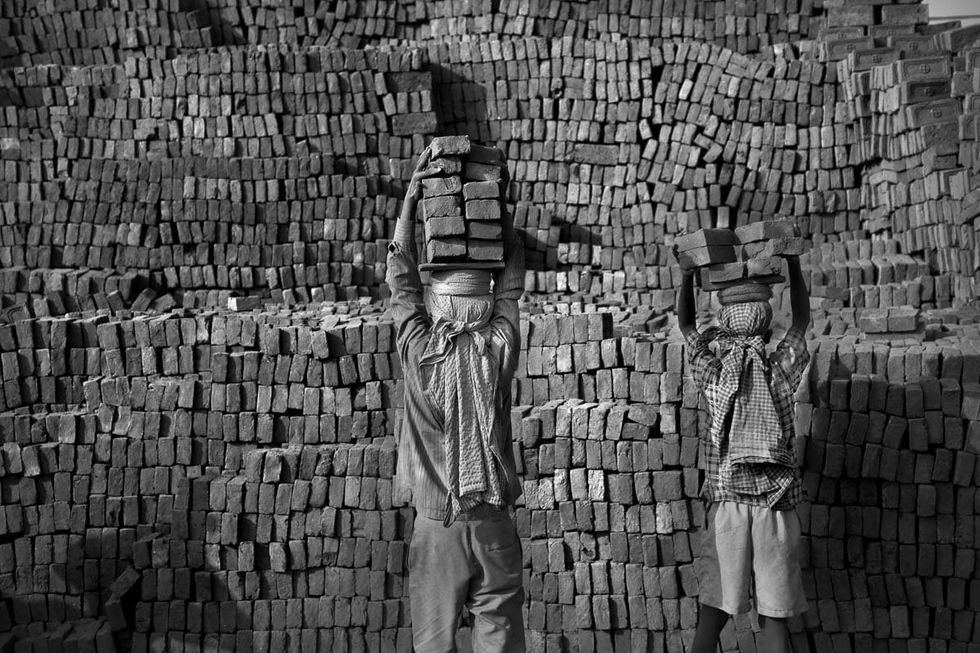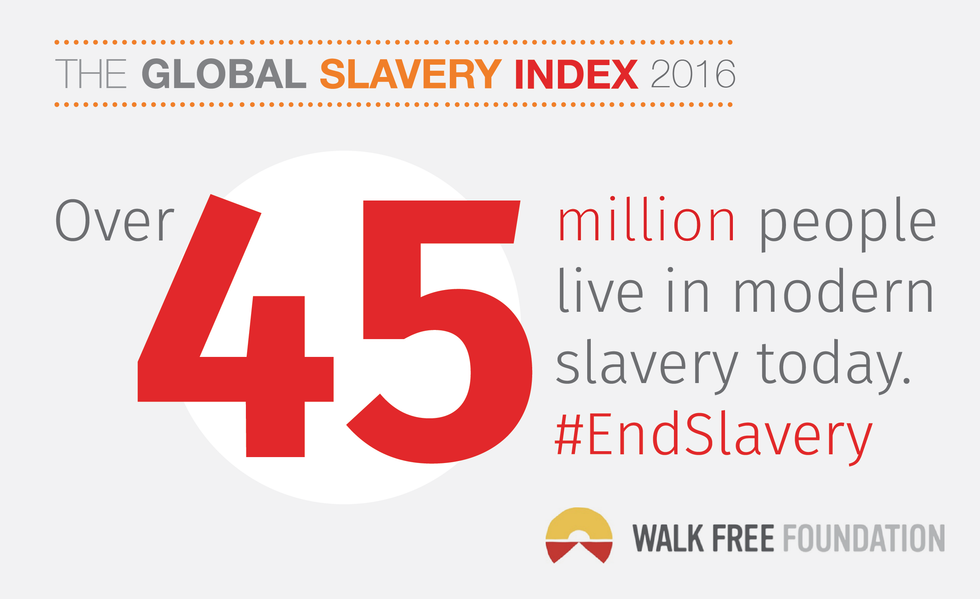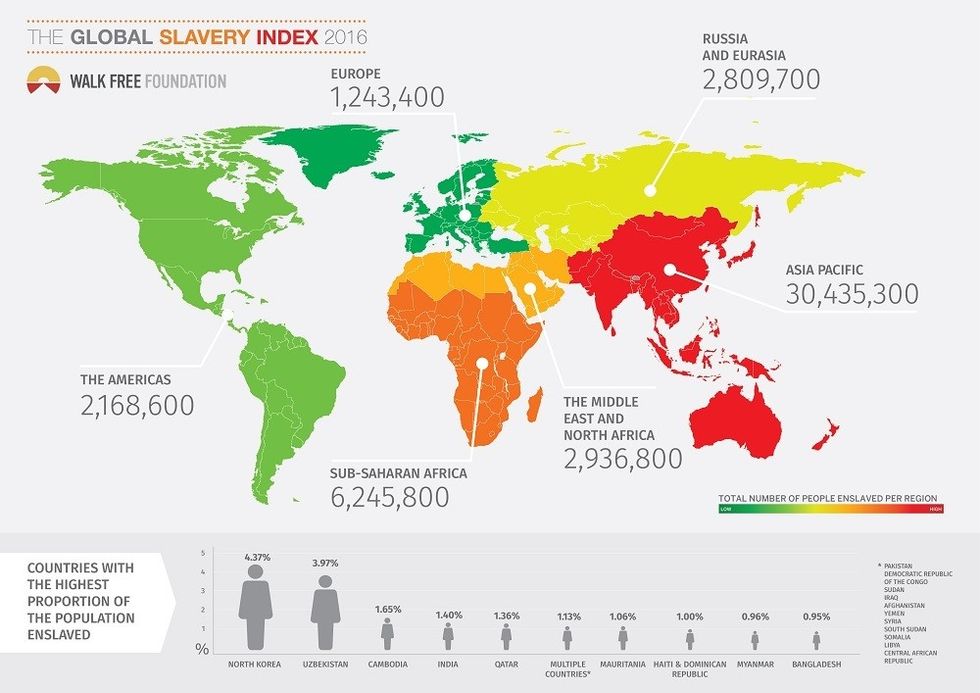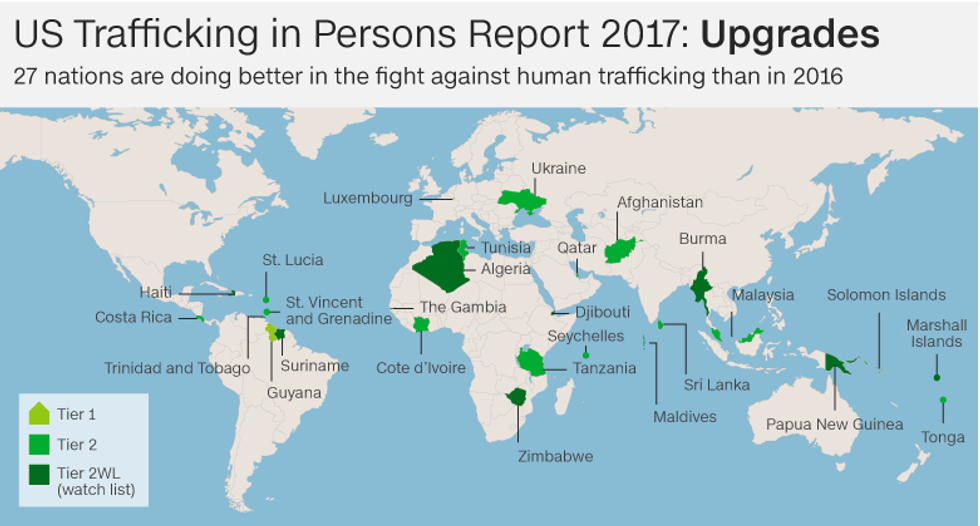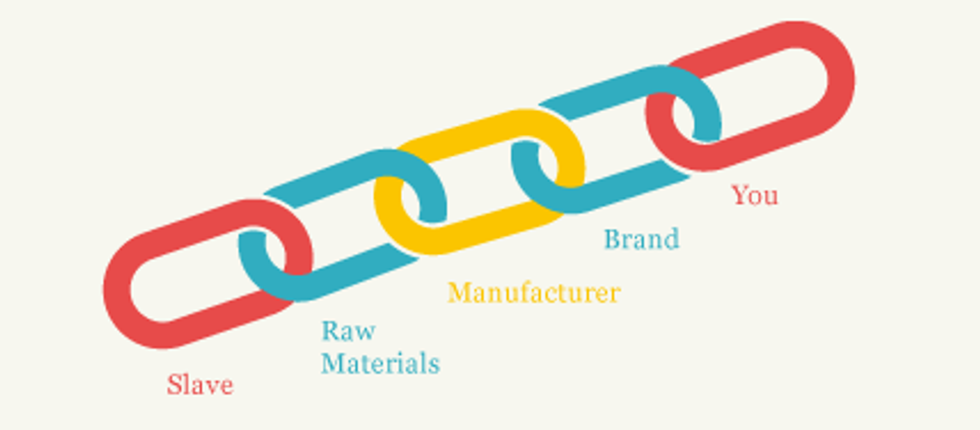This July 30 marked the World Day against Trafficking in Persons, a grave reminder of the attention and efforts this exploitative crime demands for its eradication.
Here are 10 facts about modern-day slavery in the 21st century.
1. Modern-day slavery is a major human rights issue.
The bitter truth is that slavery is not an injustice of the past. 45.8 million people are currently being exploited in our world, making more people trapped under slavery today than at any other point in human history.
2. It is a profitable crime.
As the third largest international crime industry, modern-day slavery generates $150 billion annually in exchange for the commodification of human beings.
3. It occurs in the United States.
A major misconception regarding the extent of trafficking would have you believe that trafficking does not occur in the United States. According to the president of the National Center for Missing and Exploited Children, anywhere from 100,000 to 300,000 children alone, as young as 12 years old, are exploited in the United States’ sex trafficking industry annually. Last year, over 7,500 human trafficking cases were recorded by the National Human Trafficking Hotline, coming in from every state, with more than 1,300 reported in California alone. Reported trafficking cases in America rose by 35.7% from 2015 to 2016.
This maponly depicts the location of potential human trafficking cases that were reported to the National Human Trafficking Hotline in 2015.
4. It is a local issue.
The San Francisco Bay Area, San Diego and Los Angeles are responsible for almost 80% of all documented trafficking occurrences in California.
5. It can be found in every country in the world.
According to the most recent Global Slavery Index, modern-day slavery knows no geographic limits.
Though slavery is illegal almost everywhere, trafficking continues to thrive in the shadows because of the very nature of the crime (which relies on force, fraud and coercion) and laws against slavery simply not always being enforced by law enforcement and judicial systems around the world, permitting this injustice to fester without traffickers’ fearing consequence.
6. It sadly comes in a multitude of forms.
The perception that sex trafficking is the only form of modern-day slavery is false. Trafficking in persons encompasses multiple forms of exploitation from sex trafficking, child labor and forced labor to bonded labor, domestic servitude, organ removal and child soldiers.
7. It affects women and men, girls and boys alike.
According to the United Nations Organization on Drugs and Crime (UNODC)’s 2014 Global Report on Trafficking in Persons, almost one third of trafficking victims are children. The report also found that while 65% of forced labor trafficking victims were male, 97% of sexual exploitation victims were female. In 2011, 49% of trafficking victims were women, 21% were girls, 18% were men and 12% young boys.
This figure from the UNODC report depicts the forms of exploitation among detected female and male trafficking victims.
8. Trafficking in the United States is interconnected with youth homelessness.
Research by the University of Pennsylvania’s Field Center for Children’s Policy, Practice and Research and Loyola University’s Modern Slavery Research Project in New Orleans found that nearly 20% of homeless youth in the United States and Canada are victims of human trafficking. They also found that 68% of youth who engaged in the commercial sex trade did so while homeless.
9. 27 nations have improved their anti-slavery initiatives since 2016.
The annual US Trafficking in Persons Report by the State Department ranks governments by their level of compliance with the minimum standards of the Trafficking Victims Protection Act (TVPA) ranging from Tier 1 full compliance to the least significant efforts of Tier 3.
This year’s report released in June found that two countries (Guyana and Luxembourg) rose from Tier 2 to Tier 1, nine rose from the worst ranking Tier 3 to the Tier 2 watch list, and two others (Ukraine and Qatar) rose from the watch list to Tier 2.
10. Many products distributed and sold in the United States unfortunately hold the marks of slavery.
The reality of modern-day slavery is so rampant in our supply chains that the US Department of Labor has articulated all the items produced by child labor and forced labor abroad, which are then sold and consumed domestically.
Slavery is a stain on nearly every industry. Nearly 200,000 children are forced to work on cocoa plantations in the Ivory Coast to gather the pods needed to make our holiday chocolates. Child labor is exploited in Congo mines to extract the cobalt needed for the batteries of our smartphones, electric cars and laptops. Child labor is used to mine mica used for beauty products and by car manufacturers to provide a pearlescent paint effect.
2017’s World Day against Trafficking in Persons reminds us of these gruesome realities, which millions face, while furthering my resolve to see the end of modern-day slavery in my lifetime. Anti-slavery efforts are the core of my human rights concerns and justice work. As a freedom fighter, I will continue to advocate on behalf of children, survivors and my fellow brothers and sisters until freedom is realized for all. You may read my earlier article to get more ideas on how you can help end modern-day slavery and join me in this fight for freedom.

